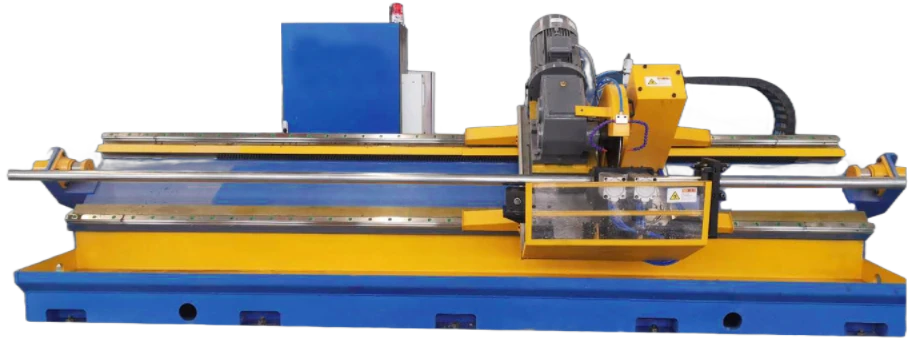Innovative Techniques in Sheet Metal Forming Rollers for Enhanced Production Efficiency
The Art and Science of Sheet Metal Forming Rollers
Sheet metal forming is a pivotal process in modern manufacturing, enabling the creation of intricate shapes and components vital to various industries. Among the essential tools employed in this process are sheet metal forming rollers. These specialized machines are designed to transform flat sheets of metal into specific shapes through the application of controlled pressure and deformation.
Understanding Sheet Metal Forming
Sheet metal forming involves a series of operations that convert flat sheets of metal into desired profiles. The principal methods include bending, stretching, and compressing the metal, which may be made from materials such as steel, aluminum, or copper. This process is integral to the production of components used in automotive, aerospace, electronics, and construction industries.
The Role of Forming Rollers
Forming rollers, or roll forming machines, play a crucial role in shaping metal sheets and strips. These machines consist of a series of rollers that gradually bend or curve the metal into the desired profile as it passes through the machine. Forming rollers are capable of producing consistent results, ensuring uniformity in the shape and thickness of the final product.
Types of Roll Forming Processes
There are several key types of roll forming processes utilized in sheet metal forming
1. Continuous Roll Forming This method uses a series of rollers arranged in a progressive manner to shape the metal in a continuous motion. The metal strip is fed through the rollers where it is gradually deformed, making this process highly efficient for large production runs.
2. Manual Roll Forming In contrast to continuous systems, manual roll forming relies on operators to adjust the rollers and guide the material. This process is typically used for smaller production runs or specialized one-off projects where precision and customization are paramount.
3. Servo Roll Forming This advanced technology incorporates the use of servo motors to control the speed and positioning of the rollers. This allows for greater flexibility in production, enabling changes in design or material thickness without significant downtime.
sheet metal forming rollers

4. Transfer Roll Forming This method combines the advantages of roll forming with the ability to transfer workpieces between different stations for further processing. It is particularly useful when multiple operations need to be performed on a single metal piece.
Advantages of Using Forming Rollers
One of the primary benefits of utilizing sheet metal forming rollers is their efficiency in mass production. They provide a consistent output and can process large quantities of metal with minimal scrap material. Additionally, the precision of rollers means that products meet strict tolerances, crucial for industries that demand high-quality standards.
Cost-effectiveness is another advantage. Once set up, forming rollers rapidly produce large quantities, reducing labor costs and time associated with manual processes. Furthermore, the versatility of these machines allows manufacturers to produce a wide range of profiles, from simple shapes to complex designs.
Challenges and Considerations
While forming rollers offer numerous benefits, challenges remain. The initial investment for establishing a roll forming line can be substantial, and the design of the rollers must be carefully engineered to accommodate the specific requirements of the product being manufactured. Moreover, maintenance of the rollers is crucial to ensure long-term operability and efficiency.
Understanding the material properties of the sheet metal being formed is also vital. Different metals and thicknesses respond uniquely to forming processes, and improper settings can lead to defects such as cracking or warping.
Future of Sheet Metal Forming Rollers
As technology continues to advance, the future of sheet metal forming rollers looks promising. Innovations such as digital controls, artificial intelligence, and enhanced material technologies are set to further improve the efficiency and capabilities of these machines. The rising trend towards automation within the manufacturing sector will also likely see the integration of roll forming machines with smart technologies, paving the way for even greater precision and adaptability.
In conclusion, sheet metal forming rollers are indispensable tools in the manufacturing process, delivering precision, efficiency, and versatility. Their ongoing evolution and integration with modern technologies will undoubtedly shape the future landscape of sheet metal manufacturing, continuing to meet the ever-changing demands of various industries.
-
High Frequency Straight Seam Welded Pipe Production Line-BzZhou Xinghua Machinery Equipment Manufacturing Co., LTD.|line pipe steel&welded gas pipeNewsJul.30,2025
-
High Frequency Straight Seam Welded Pipe Production Line-BzZhou Xinghua Machinery Equipment Manufacturing Co., LTD.|High Precision&Automated SolutionsNewsJul.30,2025
-
High Frequency Straight Seam Welded Pipe Production Line - BzZhou Xinghua Machinery Equipment Manufacturing Co., Ltd.NewsJul.30,2025
-
High Frequency Straight Seam Welded Pipe Production Line-BzZhou Xinghua Machinery Equipment Manufacturing Co., LTD.|Precision Welding, High EfficiencyNewsJul.30,2025
-
High Frequency Straight Seam Welded Pipe Production Line|BzZhou Xinghua|Precision Welding&EfficiencyNewsJul.30,2025
-
High Frequency Straight Seam Welded Pipe Production Line - BzZhou Xinghua|Precision Engineering&EfficiencyNewsJul.30,2025


